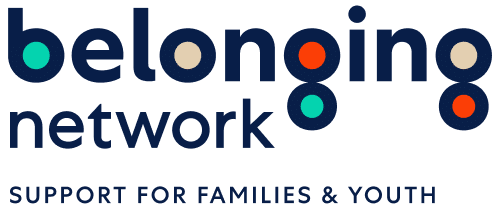Are you hoping to adopt an infant or toddler? Your best bet is to consider domestic adoption through a licensed adoption agency. This kind of adoption is often called “local infant adoption” or “newborn adoption.”

Adopting an infant or toddler in BC
With more access to family planning and a wider acceptance of, and support for, single parents, there are very few babies available for adoption in British Columbia.
If you want to adopt an infant or toddler in BC, you will need to work with one of BC’s licensed adoption agencies. On average, 20-30 babies are placed for adoption in BC each year through licensed agencies.
Nowadays, the children available for adoption through international programs or adoption from government care are almost always older.
Overview
Local infant adoptions are initiated by parents who wish to place their baby with an adoptive family. Licensed adoption agencies facilitate these adoptions. The placing parents are usually involved in choosing the adoptive parents.
First, the expectant parents who are considering placing their child for adoption receive counselling so they can explore all their options and get support.
If the parents choose adoption, they can place with:
- A family member
- A friend or someone else they already know (this is called direct placement and requires working with an agency)
- A single person or a couple who has been approved to adopt by a licensed adoption agency
| Adoption representative | Infant adoptions in BC are facilitated by licensed adoption agencies. |
| Typical age range | Usually under 1 year old. |
| Eligibility criteria for prospective parents | You need to be at least 19 years old and have lived in British Columbia for at least six months. |
| Costs | $20,000-$30,000 and up. |
| Timeline | 1 to 3 years to be approved as a prospective parent. Wait times to be matched with a child and have an adoption finalized vary widely. |
| Access to social and medical history | You will have access to the child’s social and medical history before adopting. |
| Openness of adoption | Level of openness varies from child to child, but is recommended when safe. Often includes openness with birth parents and extended family. |
| Financial support | You will have access to the BC Adoption Expense Tax Credit. |
Support needs of younger children
A common misconception is that younger children have fewer support needs. This isn’t accurate. Every adoption involves trauma and loss, and all waiting children have support needs. Adopting a younger child simply means there are more unknowns.
Diagnoses and challenges often can’t be pinpointed until the child is a few years old. old. If you adopt a very young child, you may be informed about risk factors, such as prenatal substance exposure, or be advised that your child may need assessments by specialists in the future.
Steps to domestic adoption through a licensed agency
BC has licensed agencies that offer a wide range of adoption services and experiences. The one you choose will be your partner as you move through your adoption journey. Choose the one that is the right fit for your family and your adoption goals.
1. Research and choose a BC adoption agency
BC has licensed agencies that offer a wide range of adoption services and experiences. The one you choose will be your partner as you move through your adoption journey. Choose the one that is the right fit for your family and your adoption goals. Find an adoption agency→
2. Submit an application to the agency
Submit your application to your selected agency. The application process will include a meeting with the agency, having a home visit, and completing an electronic or paper package.
The agency will review your application, including reference checks, a medical check, a criminal record search, and a prior contact check with the Ministry for Child and Family Development (MCFD).
3. Adoption training
All prospective parents are required to complete adoption education. This may be the agency’s own training or you may have the option of taking the Adoption Education Program (AEP) online.
4. The homestudy
A social worker from your agency will contact you to prepare you and set up the first visit. A homestudy usually involves six to eight visits from a social worker over the course of several months.
They’re not just looking at the physical setup of your home, but also will interview you about your life, including your upbringing, family and current relationships, health, experience with children and youth, and approach to parenting.
5. Getting matched with a child
You are now officially a waiting parent. You will need to create a family profile that talks about your family and your story. Your agency will provide specifics, but it usually includes family photos and a written letter to the potential birth parent(s). Your agency will start to share your profile with potential birth parents that you may be a match for. If you’re selected, you’ll have a big decision to make.
6. Making a decision
When you’re offered a match, your social worker will give you information about the child and/or their birth parents. Use this information to help you decide whether you want to accept the match.
If you accept the match, your social worker will start making arrangements and help you prepare to adopt the child. This may include meeting the expectant parents and creating an openness agreement.
7. Welcome a child home
Your child may come home with you directly from the hospital or they may spend some time with their birth parents. The birth mother can legally give consent for the adoption once the child is at least 10 days old. She may revoke her consent within 30 days of the child’s birth. A birth father may give consent at any time after the child’s birth.
8. Finalization
Your social worker will stay in touch and offer support during the six-month residency period, and will send final paperwork to the courts for approval. Once the adoption is finalized, you’ll receive an adoption order in the mail. A new birth certificate for your child will be issued when the adoption is complete. You will continue to receive support through your adoption agency. You can also access AFABC’s support services at any time.
BC’s licensed adoption agencies
British Columbia’s adoption agencies are government-licensed, non-profit societies that offer a wide range of adoption services and experiences, including domestic infant adoption. The one you choose will become your partner in your journey, helping you navigate the many components of the adoption process.
You’ll want to research and choose the agency that is the right fit for your family and your adoption goals. Agencies are regulated by BC’s Director of Adoption and operate in accordance with BC’s Adoption Act.
Adoption Centre of British Columbia (Kelowna) 1-800-935-4237
Sunrise Family Services (North Vancouver, Victoria) 1-888-984-2488
International adoption of infants and toddlers
BC’s licensed adoption agencies also facilitate international adoptions. In the past, it was common for infants and toddlers to be available for adoption from other countries. This is now much less common. When infants and toddlers are available they often have significant support needs. That said, the landscape of international adoption changes rapidly. Contact the agencies to find out which countries have open programs and the ages and needs of children who are available for international adoption.
Can I adopt a baby or toddler from foster care?
Infants and toddlers are not available for adoption from government care. The majority of waiting children in care are between the ages of 5 and 18.
This can be disappointing information for hopeful parents, but it’s important to be clear about the reality. This section will help you understand the reasons, as well as some of the unique risk factors you should be aware of if you want to adopt a baby or young child.
Voluntary adoption plans
MCFD does not facilitate voluntary adoption plans for infants. Unless there are child protection concerns, the Ministry of Children and Family Development (MCFD) refers expectant and new parents considering adoption to BC’s licensed adoption agencies. The agencies provide free counselling and support to expectant and new parents. If the parents choose adoption, the agency will work with them to create and facilitate their adoption plan.
Why children enter care
Children usually enter government care because of child protection concerns. Neglect and abuse are the most common reasons.
These concerns are often caused or complicated by substance misuse, intergenerational trauma, or unmanaged mental health concerns in their family.
Length of time in care
Children enter government care only when there is no safe way to remain home or with extended family. Very few children enter care at birth.
Reunification is the goal for all children and youth in foster care. Adoption is chosen only for the small percentage of children and youth who cannot return to birth or extended family.
Becoming available for adoption
Before a child can be registered for adoption a judge must issue a continuing custody order (CCO), permanently ending the birth parents’ rights. Then adoption or another permanency plan can be explored. Court processes take time, and contribute to children being older at the time they are registered for adoption.
Sibling groups
Many children in BC who are waiting to be adopted come in groups with their siblings–two or more children who need to find a family together. Even if there are younger children in the group, they can only be adopted along with their older brothers or sisters.
It usually takes longer for sibling groups to find an adoptive home. If you’re up for the unique challenge and joy of adopting siblings, get in touch with us to find out more.
Sometimes, a new child who is the sibling of an adopted child also needs an adoptive family. In such cases, the parents who adopted the older sibling might be asked if they’re interested in adopting the new child too.
Adoption by foster parents or someone the child knows
When the permanency plan fora child becomes adoption, priority may be given to foster parents or someone with an existing connection or relationship.
Many children adopted from government care find their permanent homes with their foster parents. This can provide stability, maintain existing attachments, and avoid the trauma of another move.
Sometimes a child is adopted by someone else they already know, like a family member, a teacher, or a neighbour. This is called “child-specific” adoption.
Foster parent and child-specific adoptions occasionally include younger children. These types of adoption aren’t available to general applicants.
Keep in mind that foster care is not meant to be a pathway to adoption. The primary goal of foster care is reunification, and most children and youth eventually return to their birth families.
Existing approved homes
If an infant or toddler ever became available for adoption through MCFD, there are more than enough approved adoptive homes already waiting for a young child.
The real need is for more homes for the children who are actually waiting: older children and teens, sibling groups, and children or youth with more significant needs.
Many people start their adoption journey hoping to adopt a baby or toddler, but expand their age range once they learn more about older child adoption and the wonderful children and youth who are waiting for loving, permanent families.
Other options for adoption
Some people who want to adopt a baby later choose to widen their options and think about adopting an older child or teenager. Here’s how to learn more about your options:
- Check out our Adoption overview page for a quick explanation of your adoption options.
- Get in touch with our Family support team to talk to someone in person.
- Watch this video to learn more about what it’s like to adopt an older child.
Meet the Everton-Fergusons
Karen and Mike knew they wanted to adopt an older child from foster care. They welcomed their pre-teen daughter Tanisha home through the Belonging Network.
Further reading
The rollercoaster ride of adoption

